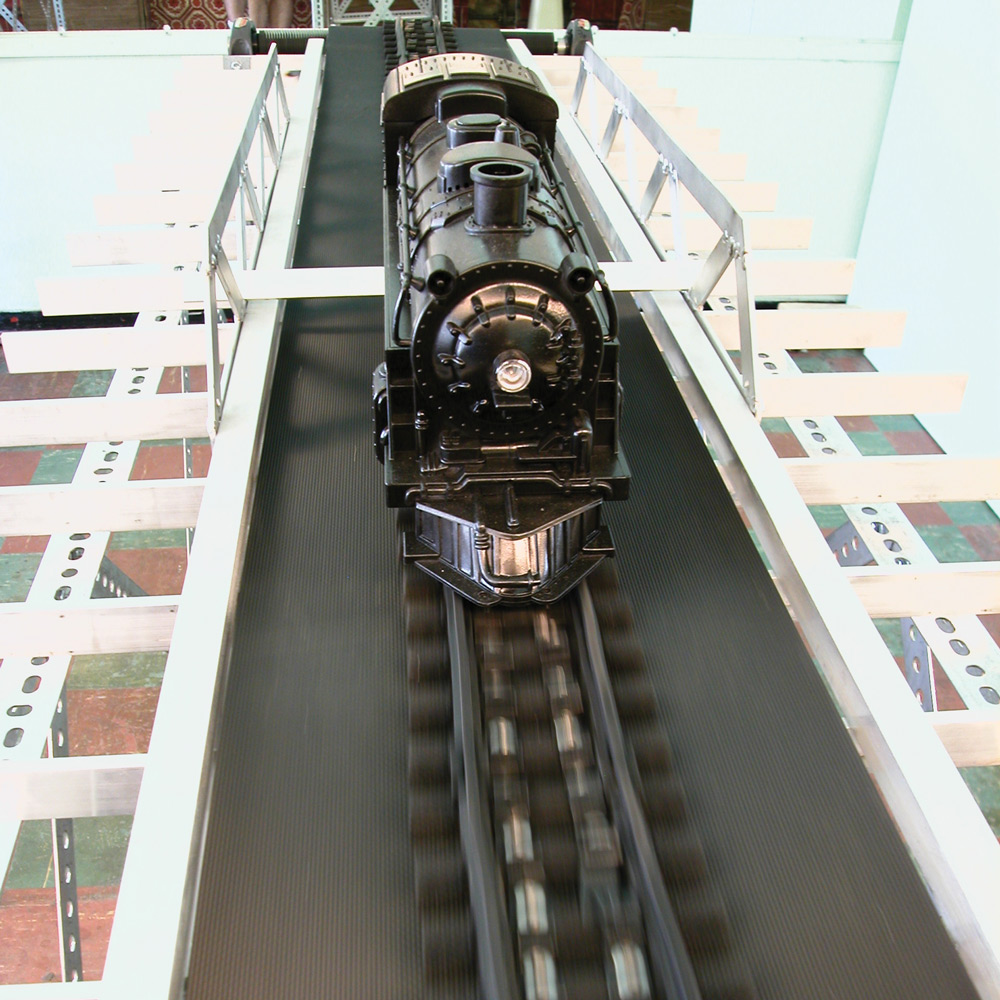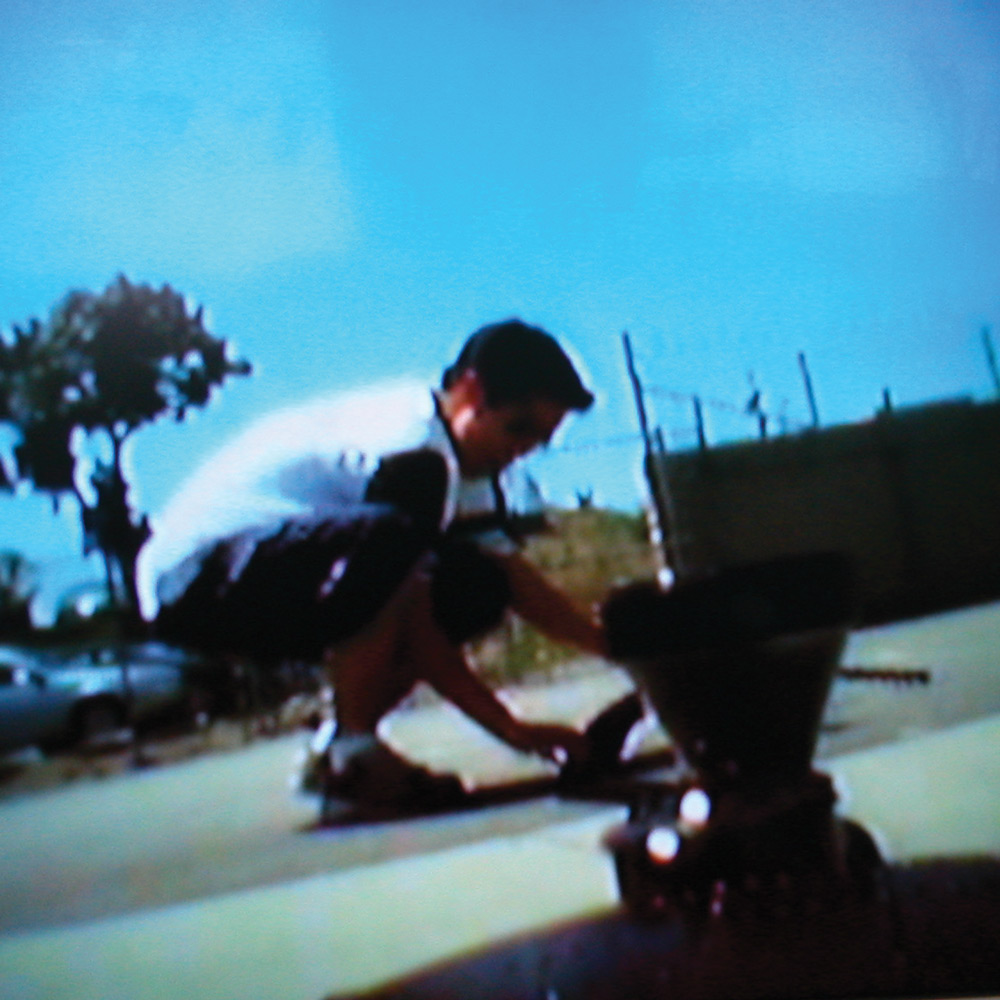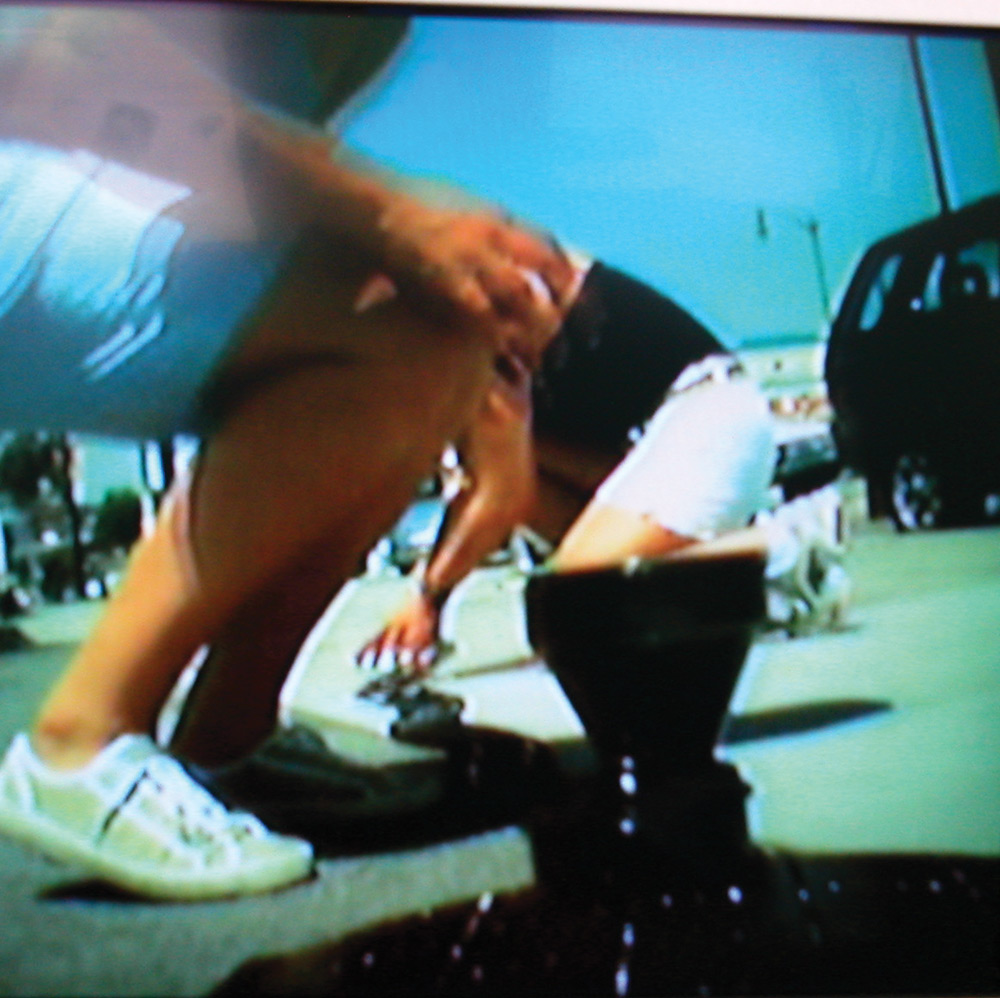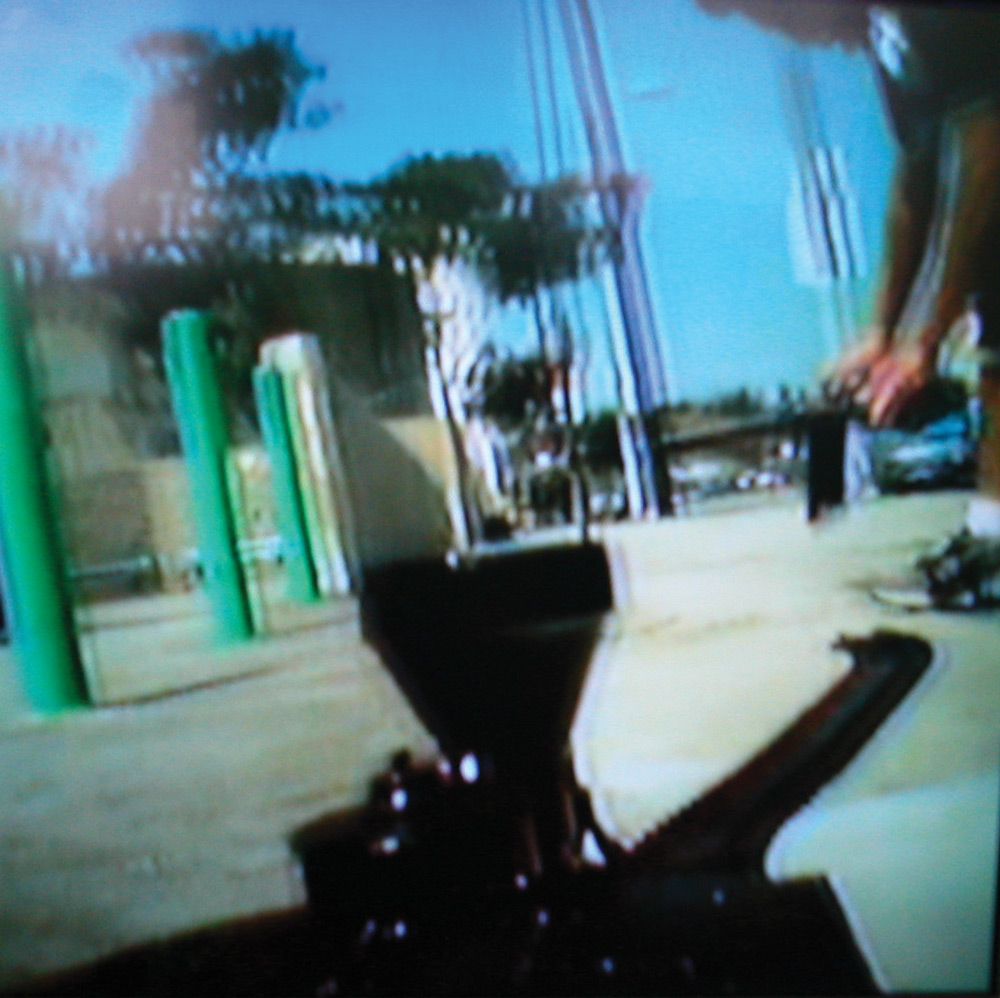JANE MULFINGER: The Fictive City and Its Real Estate:
The Tale of the Transcontinental Railroad, 2004
Performance: Union Station to Chinatown, 2 miles of live railroad construction
- rubber, aluminum, plastic, glass, model trains, wifi videocam/receiver

Gallery installation: New Chinatown Barbershop, Leefahsahlung, 930 N. Hill St., Los Angeles - a site-specific installation, performance, and text collaboration with artist/curator Annie Shaw and writer, Norman Klein (see attached essay, The Three Chinatowns)
The legendary construction of the locomotive infrastructure in the West, and its intertwined relation to decades of racial turbulence throughout the early migration of Chinese settlers in Los Angeles form the historic background of this project. Inside the New China Town Barber Shop, video footage provides a view from the model train on a journey through China Town while two sets of toy trains and model rail tracks occupy the mirrored gallery space. The tracks revolves continuously while the trains run in place. Facing in opposite directions and into the barbershop mirrors, the trains’ placement evokes a narcissistic portrait that supports the historic fascination with the construction of the train and the railroad. As part of the May 15th opening, a symbolic railway construction took place starting at the entrance of Union Station and ending at the New China Town Barber Shop. A team of participants, each representing an instrumental facet of the railroad project, laid track sequentially, as a radio controlled model train made its way through various terrains between Union Station and Chinatown. This performance served as a walking guide, bringing the general public through specific sites, both significant and mundane, inviting the viewer to actively observe details of urban detritus through the scale of the diminished train, and to imagine or discover the histories buried within the forgotten landscape around Chinatown. The subtext of the exhibition is the subjective nature of history writing, and the collective amnesia defining our general perception of the Southern Californian landscape. From the railroad to the freeway, real estate development and its aggressive reinvention of our built environment consistently erode outward signs of ethnic, racial and class history.




